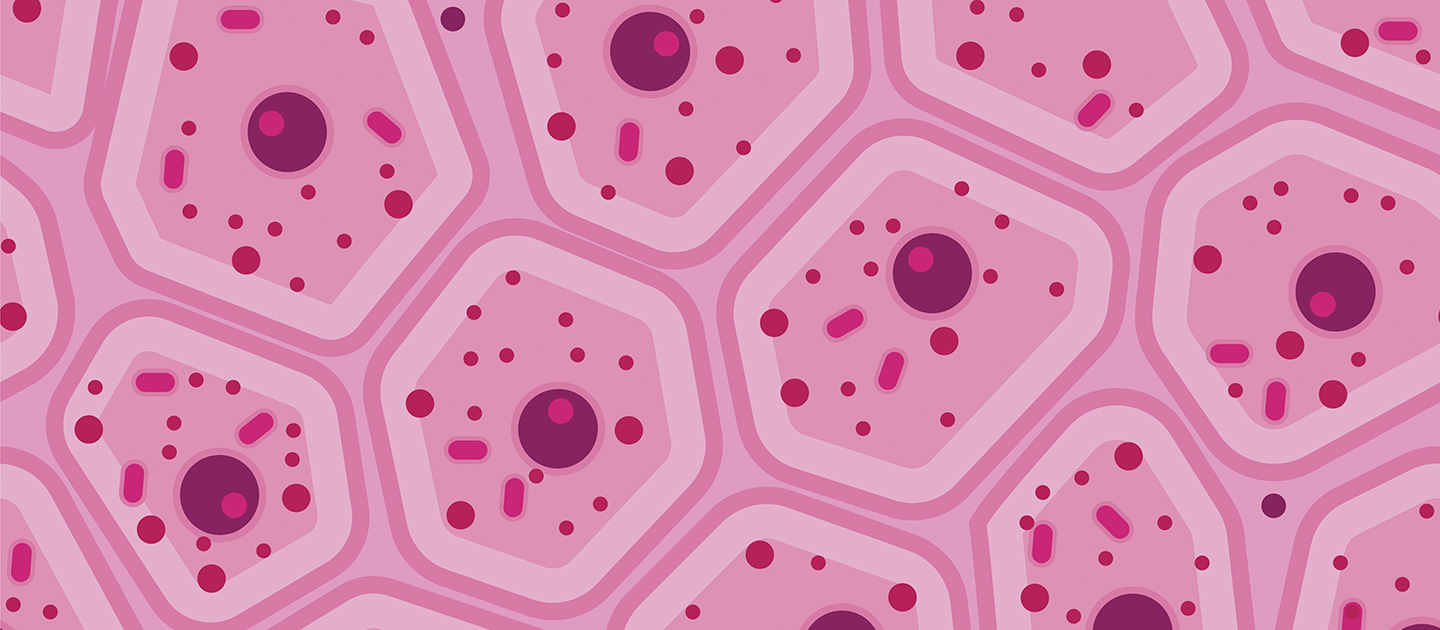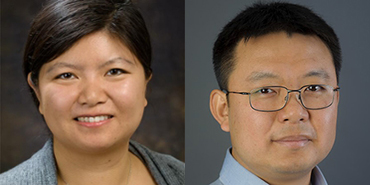Using Super-Resolution Imaging to Better Understand Human Skin Cells
Researchers found that different parts of a well-established cell structure can localize to other places

- Professors Hao F. Zhang and Xiaomin Bao’s groups used super-resolution imaging on human skin cells for the first time.
- The researchers explored the gateways between the cells’ cytoplasm and nucleus at a resolution of 1/5,000th the diameter of a human hair.
- The team found that the different parts of a well-established cell structure can localize to other places and function beyond their well-recognized roles, which could have implications in the understanding of cell structures, healthy human tissues, and disease progression.
An interdisciplinary team of Northwestern University researchers, including Northwestern Engineering’s Hao F. Zhang and Xiaomin Bao from the Weinberg College of Arts and Sciences, has applied super-resolution imaging on human skin cells for the first time.
The team’s findings include a new understanding about how the different parts of a well-established cell structure can localize to other places and function beyond their well-recognized roles. The work could have implications in the understanding of cell structures, healthy human tissues, and disease progression.

“This research helped to break new ground in understanding different nucleoporins (NUPs) in skin stem cell function, differentiation, and diseases,” said Bao, the paper’s lead author and an assistant professor of molecular biosciences and dermatology at Weinberg. “In skin cells, we are only beginning to understand these NUPs, especially when they are localized away from the nuclear pores (the gateways between cell’s cytoplasm and nucleus). Detailed characterizations of NUPs’ functions, both ‘on pore’ and ‘off pore,’ will shed new light on regenerative medicine and disease pathogenesis.”
A paper describing the research, titled “Nucleoporin Downregulation Modulates Progenitor Differentiation Independent of Nuclear Pore Numbers,” was published Oct. 18 in the Nature Portfolio journal Communications Biology.
Zhang, professor of biomedical engineering at Northwestern Engineering and director of the Center for Engineering in Vision and Ophthalmology (CEVO), was a coauthor of the study. His lab is dedicated to developing novel optical imaging techniques for biomedical research and clinical care.
“Integrating spectroscopic single-molecule localization microscopy with stochastic numerical modeling has the potential to analyze undetectable alterations in complex protein structures, such as nuclear pore complex, to benefit fundamental biological investigations,” Zhang said.
Zhang’s expertise was needed for the super-resolution imaging used in the study. Using Zhang’s single molecule localization microscopy (SMLM), the researchers explored the NUPs by visualizing and counting the number of nuclear pores at 20 nanometers, or 1/5,000th the diameter of a human hair. These NUPs are highly expressed in epidermal stem cells, but undergo significant reduction as these cells transition to the differentiation state when they become specialized.
“Using SMLM, we were surprised to find that nuclear pore numbers remain stable between these two states, despite the NUPs’ differential expression,” Bao said. “We further identified that the NUPs can be found in other subcellular locations, beyond their canonical location at the nuclear pores, especially when they are highly expressed in the stem cell state.”
Crucially, changes in NUP expression levels have been reported in cancer. Bao and Zhang’s findings demonstrate that changes in NUP levels are not necessarily linked to changes in pore numbers, but they did find that various NUPs can be found in non-traditional locations such as the cytoplasm and the nucleus.
“These non-canonical fractions of NUPs can contribute to gene regulation through different pathways,” Bao said. “We identified that the high expression levels are linked to suppressing immune responses in the stem cells. Recently, we identified two other NUPs that can bind to chromatin and integrate into epigenetic regulatory pathways essential for stem cell maintenance.”
This collaboration team also recently published a paper, detailing their method of accurately counting nuclear pores using SMLM guided by a stochastic modeling of molecular labeling uncertainties of NUPs, in the journal Nano Letters. Moving forward, Bao and Zhang established a foundation for applying SMLM to visualize and compare nano-sized cellular structures (such as nuclear pores) among different cell states.
“Conceptually, this work established that NUP levels don’t necessarily correlate with nuclear pore numbers, and NUPs can function/localize beyond the pores,” Bao said. “Future work characterizing NUPs in other subcellular locations, in addition to the pores, is needed to understand their roles in healthy human tissues and in disease progression.”